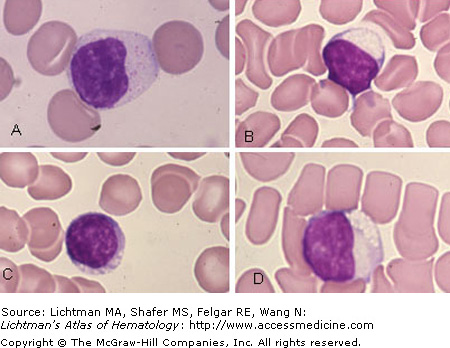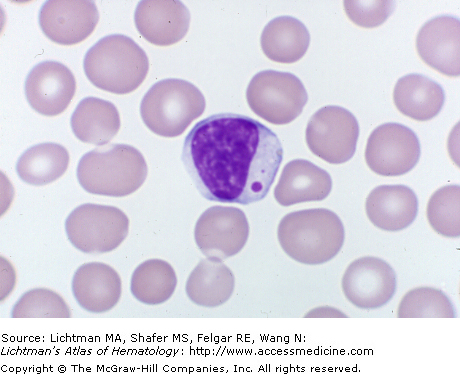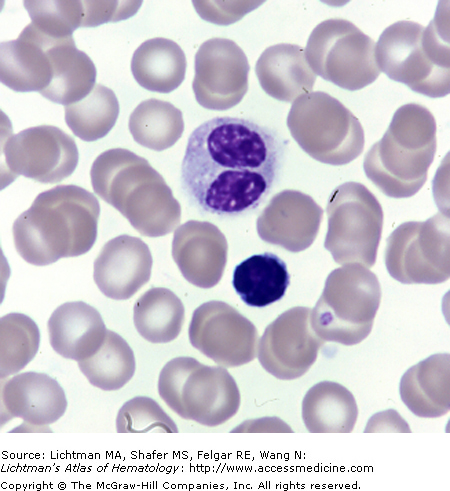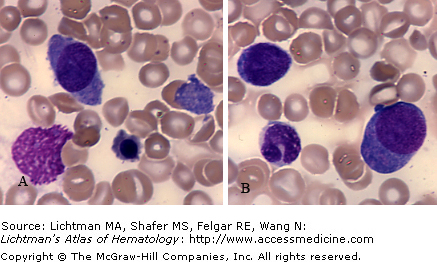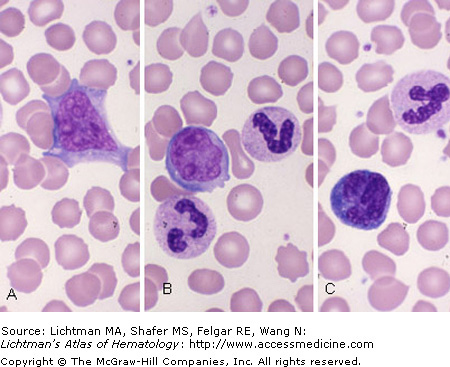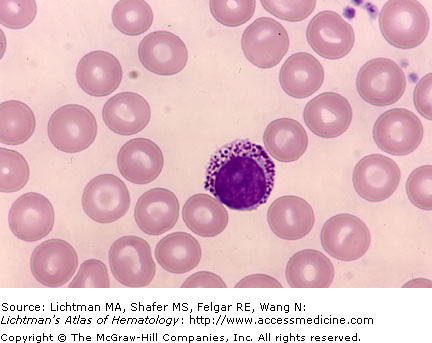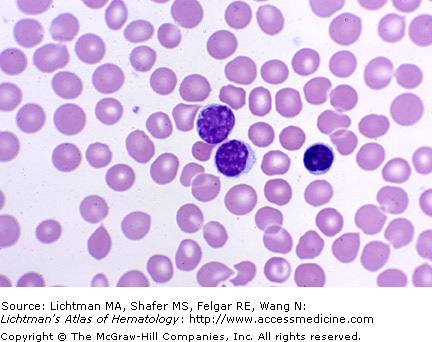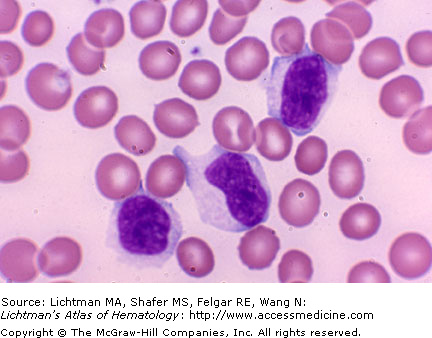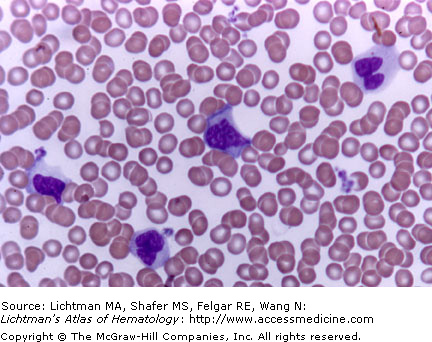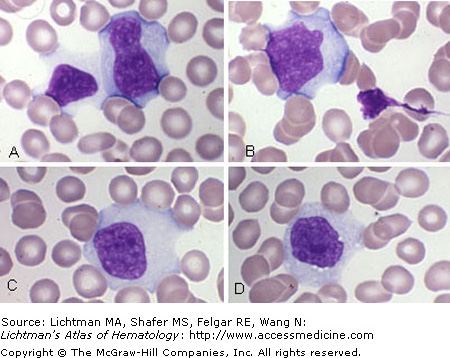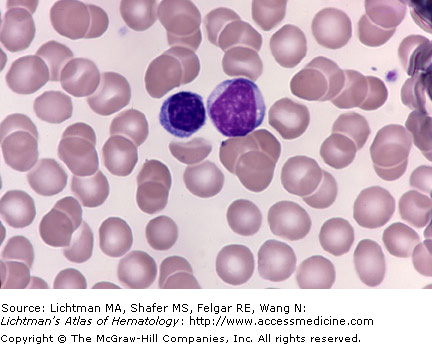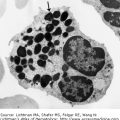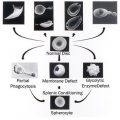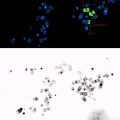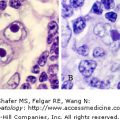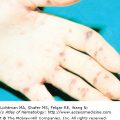II.G.001 Alder Reilly Anomaly
II.G.002 Batten Disease
II.G.002
Batten disease. (A-D) Lymphocytes displaying small and large vacuoles in cytoplasm. Batten disease is a fatal, inherited disorder of the nervous system that begins in childhood. In some cases, the early signs are subtle, taking the form of personality and behavior changes, slow learning, clumsiness, or stumbling. Symptoms of Batten disease result from accumulation of lipopigments made up of fats and proteins in the tissues.
II.G.003 Chediak-Higashi Disease
II.G.004 Chediak-Higashi Disease
II.G.005 Congenital Rubella
II.G.006 Drug reaction
II.G.007 Hurler Disease
II.G.007
Hurler disease. Blood film. Lymphocyte. Note numerous cytoplasmic granules characteristic of this mucopolysaccharidosis. Presumably these are lysosomal accumulations of glycosaminoglycans, characteristic of this deficiency in enzymes that degrade glycosaminoglycan (α-L-iduronidase in Hurler disease).
II.G.008 Infectious Lymphocytosis
II.G.009 Plasma Cells: Mott Cells
II.G.010 Plasma Cells: Mott Cells
II.G.011 Infectious Mononucleosis
II.G.012 Lymphocyte


